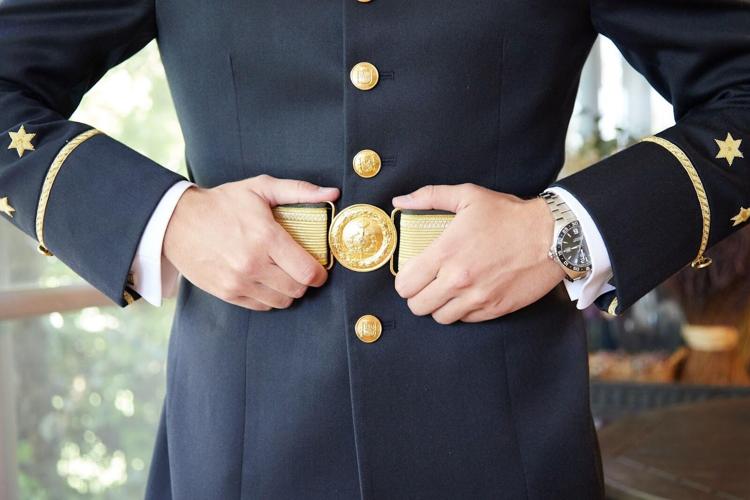Uniforms define a brand, build team spirit, and create a professional image. Before diving into your custom uniform order, look into several factors that can affect both the design and the final product.
Effective planning guarantees that the uniforms meet your organization's specific needs and display the brand’s identity effectively. Here are some considerations that should guide you in finalizing your order so that it aligns with your budget, quality standards, and expectations.

Knowing Your Uniform Needs
The most important steps in ordering custom uniforms are thoroughly defining your organization's needs. Evaluate the purpose of the uniforms: are they for a sports team, corporate staff, or perhaps volunteers at an event? Each of these uses comes with its unique requirements in terms of style, functionality, and comfort.
Athletic uniforms need moisture-wicking materials to keep athletes comfortable, whereas corporate uniforms might require a more polished appearance. Factor in the climate, typical job duties, and the extent of wear the uniforms will experience. If you are looking to design custom sports jerseys, look for reputable suppliers like The Imperial Point to guarantee that they are made from high-quality fabrics that match your specific needs. Have clear communication about your expectations so that the end product meets your vision and performs well in its intended environment.
Setting a Budget
An effective budget should account for design fees, quantities needed, and any additional embellishments like embroidery or screen printing. Higher-quality materials and designs will naturally incur additional costs, so balance your desire for premium uniforms with the available financial resources.
To avoid overspending, create a detailed list of all expected expenses. This will track expenditures so that you don’t encounter unexpected costs, potentially derailing your project. Gather quotes from multiple suppliers and consider their reputations for quality and service. By comparing offers and services, you can identify the best cost-effective solutions aligned with your vision without compromising the quality or integrity of the uniforms.
Design Considerations
The design of your custom uniforms is a visual representation of your brand. Crafting a cohesive design entails understanding color psychology, logo placement, and aesthetic. The colors chosen should resonate with the organization's values and messaging, as they should be easily recognizable and contribute to a unified look across all members wearing the uniform.
Incorporate modern and functional design features, such as pockets, zippers, or breathable panels, depending on the jobs these uniforms are intended for. Collaborating with experienced designers who specialize in uniform creation can provide invaluable insights that elevate the visual appeal without sacrificing comfort and practicality.
Size and Fit
The fit of a uniform directly affects comfort and performance. A survey or fitting session before placing an order helps capture accurate measurements so that each team member receives a uniform they can wear confidently. Offer a range of sizes and potentially even custom fittings for those who fall outside standard measurements. You should request size charts from your supplier to aid in these determinations and provide clarity on how their sizes correspond to industry standards.
Not all uniforms will fit every person in the same way, so accommodating diverse body shapes through tailored fits can improve comfort among wearers. Include a return policy for exchanges or adjustments in size, as this can save considerable time and effort later on, and allow your team to focus on its core responsibilities rather than ill-fitting garments.
Lead Times and Order Quantities
Knowing the lead times for your custom uniform order is a must for planning. Uniform production can take time, depending on factors like order size, material availability, and the complexity of design elements. Discuss these timelines with your supplier early in the process to set realistic expectations.
Account for any potential delays, which could arise from shipping, customization, or production issues. Regarding quantity, consider ordering slightly more than what you think you need to accommodate growth or replacements. A strategic approach to quantities lowers the risk of being short-staffed in the event of unexpected increases in team members or if uniforms get damaged.
Sourcing Quality Suppliers
Choosing a reliable supplier can impact the quality and success of your custom uniform order. Researching different manufacturers can help you find those with a strong reputation for quality, customer service, and convenient delivery. Reading reviews, asking for testimonials, and investigating previous work can give insight into each supplier’s capabilities.
Consider suppliers that specialize in custom uniforms and have experience catering to clients with similar needs to yours. Marketplaces and local businesses may offer a range of options, but prioritize those known for their craftsmanship and ability to meet deadlines. Establishing relationships with trustworthy suppliers can lead to better negotiation on prices, as they understand your needs and are invested in your satisfaction.
Reviewing Contracts and Terms
Before placing an order, review the terms of the contract. Contracts should outline critical aspects, including pricing, timelines, and cancellation policies. There are no hidden fees, and all terms are clearly stated to avoid misunderstandings later. Review the specifications for quality control standards, warranties, and return policies included for sizing or design errors.
Having these aspects well-defined protects both parties involved in the transaction. Don’t hesitate to ask for modifications if any terms seem unclear or unfavorable. Effective communication with suppliers will guarantee that both your organization and the supplier are in agreement. The goal is to cultivate a transparent partnership that emphasizes collaboration so that all parties are satisfied with the final agreement before moving forward with production.
Finalizing the Order
With all considerations firmly in place, finalizing the order can feel like a weight lifted off your shoulders. Double-check every detail, confirming sizes, colors, designs, and any extras like embroidered names. A final review catches mistakes that could translate into expensive missteps after production begins. Communicate clearly with your supplier about the order specifics and timeline, maintaining an open line of communication to handle any last-minute adjustments.
Establish a follow-up schedule for updates during the production process so that everything runs on track. Embracing this attention to detail reflects a professional demeanor and makes for a smoother delivery and experience.

Balancing the criteria of need, budget, and quality can lead to a successful uniform order. Considering these factors well in advance will help your organization find uniforms that serve their purpose and reflect your brand's values effectively.
Related Article:
What is the ideal size for a custom patch? Everything you need to know



(0) comments
We welcome your comments
Log In
Post a comment as Guest
Keep it Clean. Please avoid obscene, vulgar, lewd, racist or sexually-oriented language.
PLEASE TURN OFF YOUR CAPS LOCK.
Don't Threaten. Threats of harming another person will not be tolerated.
Be Truthful. Don't knowingly lie about anyone or anything.
Be Nice. No racism, sexism or any sort of -ism that is degrading to another person.
Be Proactive. Use the 'Report' link on each comment to let us know of abusive posts.
Share with Us. We'd love to hear eyewitness accounts, the history behind an article.